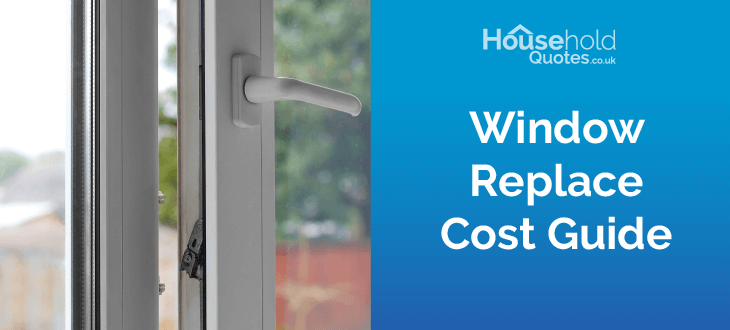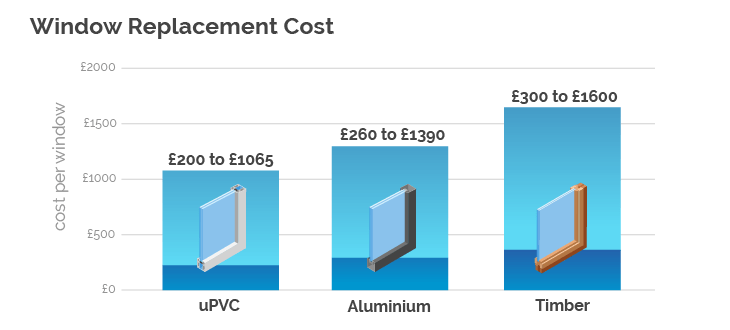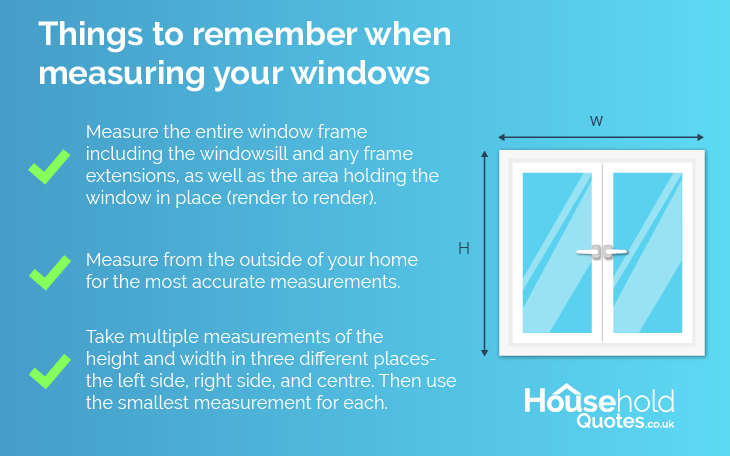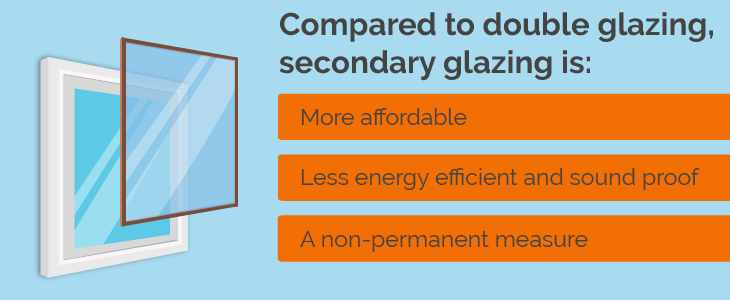
Get up to 4 quotes by filling in only 1 quick form

Compare quotes and find yourself the best deal

Increase the value of your home by installing new windows
- Householdquotes.co.uk
- Replacement Window Costs
How Much Do Replacement Windows Cost? New Window Prices


The cost for a replacement window will typically fall between £150 to £1,860, not including installation. If you’re considering some new windows and the associated window prices, it’s important to weigh the numerous options available. From materials to window styles and sizes, there are plenty of choices that you can cater to your specific needs and elevate your home’s aesthetic appeal.
Investing in new windows can significantly enhance your home’s comfort and energy efficiency, leading to some considerable savings on your energy bills. Not only do they help make your home more comfortable by preventing heat loss but they improve your home’s security. Additionally, the durability of new windows reduces their susceptibility to warping and natural wear and tear.
In this guide, we’ll break down all of these new window costs so you have a good idea of what to expect from your new window installation. But not only that, we can also help you find the best installer for the job, without all the hours of painstaking research.
Simply fill in our 30-second form, then we’ll put you in contact with up to 4 of the best installers in your area. You will then receive their tailored quotes which you can compare to find the best deal. Our free service saves you time and money, and you’re under no obligation to accept any of our quotes.
Get started by clicking the button below.
- Quotes from local installers
- Payment by finance available
- Save up to £150 per year
It only takes 30 seconds

- How much does it cost to replace windows?
- Which are the cheapest window frames?
- Which is the cheapest style of window?
- How to measure your windows
- Secondary glazing VS double glazing
- How do you know when its time to replace your windows?
- Get the best window quotes and prices for your household
- Frequently asked questions
How much does it cost to replace windows?
New windows in the UK will come with double glazing as standard. When deciding on new windows, your choice of window material can have a significant bearing on the total double glazing cost. The most popular materials include uPVC, aluminium, and timber.
For extra security, noise reduction, and thermal efficiency, some people opt for triple glazed windows. Triple glazing costs are usually 30-40% higher than standard double glazing. Considering the extra cost, triple glazing is only recommended for households in especially cold climates that can make the best use of the extra benefits.
Considering all the available window styles, we’ve put together the average new window prices according to the material you choose, as shown below.
If window replacement costs are well beyond your budget, then some companies can offer windows on finance. This gives you the chance to pay for your windows in pre-agreed instalments.

Which are the cheapest window frames?
The cheapest windows available in the UK are uPVC windows, making them one of the most popular options available on the market today.
Aluminium can be significantly more expensive than uPVC with prices usually starting at 30-40% higher, while timber prices usually start at 50-60% higher than uPVC, depending on the style and size of the window.
uPVC window prices
uPVC window prices in the UK range from £160 – £1,240, before installation. This price range accounts for casement, tilt and turn, and sash windows in various standard sizes.
| uPVC casement window cost | |||
|---|---|---|---|
| Window Frame | 600 x 900mm | 900 x 1200mm | 1400 x 1400mm |
| uPVC | £160 – £990 | £200 – £1,065 | £230 – £1,240 |
These costs are estimates. Get a local installer QUOTE now!
While uPVC is appealing for its affordable prices, the cheapest options out there might be more susceptible to warping over time. High-quality uPVC, however, is highly durable, weather-proof, and energy efficient.
These windows also require little to no maintenance across their lifetimes, besides the occasional wipe-down with a damp cloth.
Aluminium window prices
New aluminium window prices in the UK typically fall between £210 – £1,615 including standard-sized casement, tilt and turn, and sash windows. This does not include installation costs.
| Aluminium casement window cost | |||
|---|---|---|---|
| Window Frame | 600 x 900mm | 900 x 1200mm | 1400 x 1400mm |
| Aluminium | £210 – £1,290 | £260 – £1,390 | £300 – £1,615 |
These costs are estimates. Get a local installer QUOTE now!
While aluminium windows are considerably more expensive than uPVC, these windows are highly durable, long-lasting and much sought after for their stylish appearance. With modern thermal break technology, aluminium can also provide excellent thermal efficiency and requires very little maintenance over its long lifespan.
Timber window prices
Timber casement, tilt and turn and sash window prices in the UK tend to range between £240 – £1,860 before installation. Timber windows come available as softwoods or hardwoods, in a range of standard sizes.
| Timber casement window cost | |||
|---|---|---|---|
| Window Frame | 600 x 900mm | 900 x 1200mm | 1400 x 1400mm |
| Timber | £240 – £1,485 | £300 – £1,600 | £345 – £1,860 |
These costs are estimates. Get a local installer QUOTE now!
Wooden window costs are the most the highest compared to other materials, since they will last longer than any other material, and are the most thermally efficient. With much aesthetic beauty and customisable options, timber windows can also become the focal point of any home.
One downside to these windows is their regular maintenance. To prevent rotting and weather warping, you should repaint or re-varnish a wooden every 1-5 years.
While the upfront price for some new wooden windows can demand a lot from your wallet, you can at least rest assured that you’ll receive a good deal on installation. You can do this by getting your quotes from Household Quotes.
Instead of spending countless hours looking up installers to work with, and waiting around for them to provide you with a quote, we can match you with up to 4 of the top-rated window installers in your area. You can then save money by comparing their offers and choosing the best deal.
All of our quotes are free with no obligations. Get started today by clicking the button below.
- Quotes from local installers
- Payment by finance available
- Save up to £150 per year
It only takes 30 seconds

Which is the cheapest style of window?
The cheapest style of window you could buy today is a casement window in uPVC. Fixed casement windows require far less hardware since they do not open, making them the most affordable type of window. Single and double casements are priced slightly higher, yet fall lower than most other window types (tilt and turn and sash windows).
| uPVC casement window cost | ||
|---|---|---|
| Size of Window (mm) | Style | Price per window (not including installation) |
| 600 x 900mm | Fixed | £150 – £200 |
| 900 x 1200mm | Fixed | £200 – £250 |
| 1200 x 1200mm | Fixed | £250 – £300 |
| 600 x 900mm | 1 Opener | £160 – £400 |
| 900 x 1200mm | 1 Opener | £200 – £430 |
| 1200 x 1200mm | 1 Opener | £230 – £500 |
| 600 x 900mm | 2 Opener | £300- £660 |
| 900 x 1200mm | 2 Opener | £330 – £710 |
| 1200 x 1200mm | 2 Opener | £390 – £825 |
These costs are estimates. Get a local installer QUOTE now!
Casement windows prices
Casement windows are priced between £160 – £1,240 in the UK, not including installation costs. Casement windows can be seen everywhere in the UK. They are simple to operate, versatile and relatively more affordable than most other window types, whichever material you use.
| Casement window costs | |||
|---|---|---|---|
| Window Frame | 600 x 900mm | 900 x 1200mm | 1400 x 1400mm |
| uPVC | £160 – £660 | £200 – £710 | £230 – £825 |
| Aluminium | £210 – £860 | £260 – £925 | £300 – £1,075 |
| Timber | £240 – £990 | £300 – £1,065 | £345 – £1,240 |

These costs are estimates. Get a local installer QUOTE now!
Typically, casement windows open from a side-mounted hinge which allows them to swing open fully. This lets in plenty of ventilation throughout your home and allows easy access to both sides for cleaning. Casement windows can also open from a top hinge. In this case, they are known as top-hung windows. They also commonly come as double casements, which feature two windows, separated by a central mullion.
Tilt And turn windows prices
Tilt and turn windows typically cost between £200 – £1,550, not including installation. While they are slightly more expensive than casement windows, they allow more options in terms of how they operate. This helps improve ventilation through your home while maintaining comfortable levels of security and safety.
| Tilt and turn windows | |||
|---|---|---|---|
| Window Frame | 600 x 900mm | 900 x 1200mm | 1400 x 1400mm |
| uPVC | £200 – £825 | £250 – £890 | £290 – £1,030 |
| Aluminium | £265 – £1,075 | £325 – £1,155 | £375 – £1,345 |
| Timber | £300 – £1,240 | £375 – £1,330 | £430 – £1,550 |

These costs are estimates. Get a local installer QUOTE now!
Tilt and turn windows are highly versatile in that you have the option to open them fully like a casement window, or they can tilt open from the top of the window. If you’d like fresh air to enter your home while you’re not around, then the tilt-open function allows ventilation while the opening is too small for anyone to enter. An in-swing tilt and turn window also allows easy access to both sides of the window for easy cleaning and maintenance.
Sash windows prices
In the UK, sash windows typically cost between £240 – £1,860, not including installation. These are one of the more expensive window types given since they are associated with traditional British heritage architecture and they usually feature an intricate design and glazing pattern. Wooden sash window costs are some of the most expensive single window units on the market.
| Sash windows | |||
|---|---|---|---|
| Window Frame | 600 x 900mm | 900 x 1200mm | 1400 x 1400mm |
| uPVC | £240 – £990 | £300 – £1,065 | £345 – £1,240 |
| Aluminium | £315 – £1,290 | £390 – £1,390 | £450 – £1,615 |
| Timber | £360 – £1,485 | £450 – £1,600 | £520 – £1,860 |

These costs are estimates. Get a local installer QUOTE now!
Sash windows can become the focal point of any home given their distinct design and historic significance. They best complement cottage-style homes, or grand city homes. A sash window will typically feature two panels, one of which can slide vertically over the other. In a double-hung window, both windows are fully openable, allowing for even more ventilation. Modern sash windows can be turned to lie horizontally which allows for easier access to both sides of the window for cleaning.
Bay windows prices
Bay windows costs will usually fall between £1,190 – £2,700, before installation. They are considerably more expensive than standard window types, given that they are made up of 3 window units.
| Bay windows (3 panels) | ||
|---|---|---|
| Window Frame | 2,400mm x 1,200mm | 2,400mm x 1,500mm |
| uPVC | £1,190 – £1,725 | £1,240 – £1,800 |
| Aluminium | £1,550 – £2,250 | £1,615 – £2,340 |
| Timber | £1,785 – £2,590 | £1,860 – £2,700 |

These costs are estimates. Get a local installer QUOTE now!
A bay window extends from the side of your property to form a curved window structure. They have a grand appearance since they can make your home seem larger. From the inside, you are also granted some extra living space in the curve of the window. You can choose any of the standard window types to fit into a bay window structure. Whichever you choose, you can enjoy lots more natural light and ventilation in your home.
Bow windows prices
Bow windows in the UK can fall anywhere between £1,430 – £5,485, before installation. The cost depends on how many panels you’d like to feature. Companies will usually offer between 4-6 panels.
| Bow windows | ||
|---|---|---|
| uPVC bow window cost | ||
| Number of Panels | Size | Price range |
| 4 | 2,400mm x 1,200mm | £1,430 – £2,070 |
| 2,400mm x 1,500mm | £1,490 – £2,160 | |
| 5 | 3,000mm x 1,200mm | £1,820 – £2,635 |
| 3,000mm x 1,500mm | £1,950 – £2,825 | |
| 6 | 3,600mm x 1,200mm | £2,340 – £3,395 |
| 3,600mm x 1,500mm | £2,520 – £3,655 | |
| Aluminium bow window cost | ||
| Number of Panels | Size | Price range |
| 4 | 2,400mm x 1,200mm | £1,860 – £2,690 |
| 2,400mm x 1,500mm | £1,940 – £2,810 | |
| 5 | 3,000mm x 1,200mm | £2,365 – £3,410 |
| 3,000mm x 1,500mm | £2,535 – £3,675 | |
| 6 | 3,600mm x 1,200mm | £3,040 – £4,415 |
| 3,600mm x 1,500mm | £3,275 – £4,750 | |
| Timber bow window cost | ||
| Number of Panels | Size | Price range |
| 4 | 2,400mm x 1,200mm | £2,145 – £3,105 |
| 2,400mm x 1,500mm | £2,235 – £3,240 | |
| 5 | 3,000mm x 1,200mm | £2,730 – £3,955 |
| 3,000mm x 1,500mm | £2,925 – £4,240 | |
| 6 | 3,600mm x 1,200mm | £3,510 – £5,095 |
| 3,600mm x 1,500mm | £3,780 – £5,485 | |

These costs are estimates. Get a local installer QUOTE now!
Bow windows consist of multiple panels which make up a bow-shaped curve from the side of your building. Often this creates a wide panoramic view to the outside and opens up the space in your home. Like bay windows, bow windows also create some extra indoor living space, which you could transform into a seating area.
Whichever style of window you choose, you want to be sure that you find a reputable installer that is up to the job. You can either spend countless hours researching installers or you can leave it to our team at Household Quotes to find the best installers for your particular project. We will match you with the most suitable options in your area so you can benefit from the best local rates.
This saves you all the time and money it would usually take to find installers by yourself. For up to 4 free, no-obligation quotes, choose Household Quotes. Fill in our 30-second form to get started.
- Quotes from local installers
- Payment by finance available
- Save up to £150 per year
It only takes 30 seconds

How To Measure Your Windows
When it comes to window replacement, measuring your existing windows is an essential step to make sure your new windows can fit within the existing opening. Failing to do this, or measuring incorrectly, will add to the overall time and costs of your window replacement.

It’s best to consult a professional installer who can do the measurements for you, which most companies will offer free of charge.
Secondary glazing VS double glazing
There are many reasons why you might prefer secondary glazing over double glazing. Secondary glazing usually takes the form of an additional framed panel attached to the inside of your window to provide an extra layer of insulation. Other types of secondary glazing include glazing film or magnetic glazing panels.
Not only is secondary glazing cheaper to add than replacing the whole glazing units or windows, but the process of installation is also cheaper, faster, and much simpler than whole replacement. This is usually why people decide to add secondary glazing.

Monika Zoksimovska is an Expert Contributor for GreenMatch since March 2023. She is a Master of Architecture with great experience in designing and implementing innovative and energy-efficient glazing solutions for various projects. Her portfolio boasts a diverse range of residential, commercial, and institutional buildings.
Secondary glazing costs fall considerably lower than double glazing, as well as offering a non-permanent alternative to double glazing. While it doesn’t offer the same levels of thermal efficiency or soundproofing, it will certainly improve the performance of outdated or single glazed windows.
Those living in heritage buildings or listed properties may not be allowed to replace their windows, or the glazing in their windows so that the original appearance of the building is maintained. In this case, secondary glazing becomes the best option for improving energy efficiency and preventing heat loss.

How do you know when it’s time to replace your windows?
Even the best-performing windows will eventually need to be replaced, although some windows can last as long as 50 years. The lifespan of a window depends on the frame material and how well they are installed and maintained.
Outdated or damaged windows can impact the comfort and security of your home. You may also notice your energy bills go up as a result. Single glazed windows are also worth considering for replacement. Even if the window is in good condition, single glazing simply can’t perform at the same level as double or triple glazed windows, which are reinforced with 1-2 more panels of glass.
Here are some of the most clear signs that your window might be in need of a replacement:
Get the best window quotes and prices for your household
When it comes to installation of your replacement windows, you can save money by collecting multiple quotes from at least 3 installation companies. You can then compare their quotes and choose the installer that offers the best deal.
Remember: the best quotes don’t always come from the installers that offer the cheapest rates. You should always lean on the side of caution when considering an especially low price for installation, as it could indicate that the installer is inexperienced or less interested in doing a good job.
A quality installer will have a proven track record of their previous work, with plenty of positive customer reviews and testimonials. Their window products should also come with a lengthy warranty or guarantee (at least 5 years).
What should a quote for new windows include?
A new window quote should include the total price for the installation of your new windows. If you are getting your windows supplied by the same company, then it should also include the cost of the window units themselves.
Window quotes should also offer an itemised list that breaks down the price of parts and labour associated with the installation job. This will usually include things like labour costs, additional hardware, and glazing costs. You can always request an installer to break down their costs into an itemised list if they don’t initially provide it.
In most cases, window installation quotes are fixed. Should any issues come up during the installation that add to the overall time, or that require additional parts and labour, then the total price might increase. The installer should always make you aware of any changes in the price beforehand.
To get a competitively priced quote from some of the top-rated installers in your area, don’t spend countless hours of tiresome research, instead, get your quotes from Household Quotes.
We can match you with up to 4 of the best local installers from our extensive network. All of our installers have been individually vetted by our team, so you can rest assured that we only match you with the most reputable options in your area.
You can then compare their tailored quotes to get the best deal on installation. It’s completely free with no obligations.
Get started today by completing our 30-second form. Click the button below to begin.
- Quotes from local installers
- Payment by finance available
- Save up to £150 per year
It only takes 30 seconds

Frequently asked questions
uPVC is the cheapest window frame in the UK. uPVC windows range from £160 – £1,240, depending on the style and size of the window. Generally, uPVC windows fall 30-40% below the price of aluminium windows, and 50-60% below the price of timber windows.
Casement windows are the cheapest window style available in the UK. Fixed casement windows range from £150 – £300. Single and double casement windows range from £160 – £825, before installation. Casement window prices depend on the material and size of the window.
New windows can last from 10 – 50 years, depending on the material they’re made from, and how well they and installed and maintained.
The cost for a replacement window typically ranges from £150 to £1,860, before installation. Costs will depend on the material of the frame, the style of the window, and it’s size.
If you’re replacing 8-10 windows in a 3-bedroom semi-detached home, it will cost between £1,200 – £18,600 before installation.

Ciaran is a content writer at Household Quotes. He has become an expert in energy saving and eco-conscious living which he uses to create informative content for Household Quotes readers.
- How much does it cost to replace windows?
- Which are the cheapest window frames?
- Which is the cheapest style of window?
- How to measure your windows
- Secondary glazing VS double glazing
- How do you know when its time to replace your windows?
- Get the best window quotes and prices for your household
- Frequently asked questions
